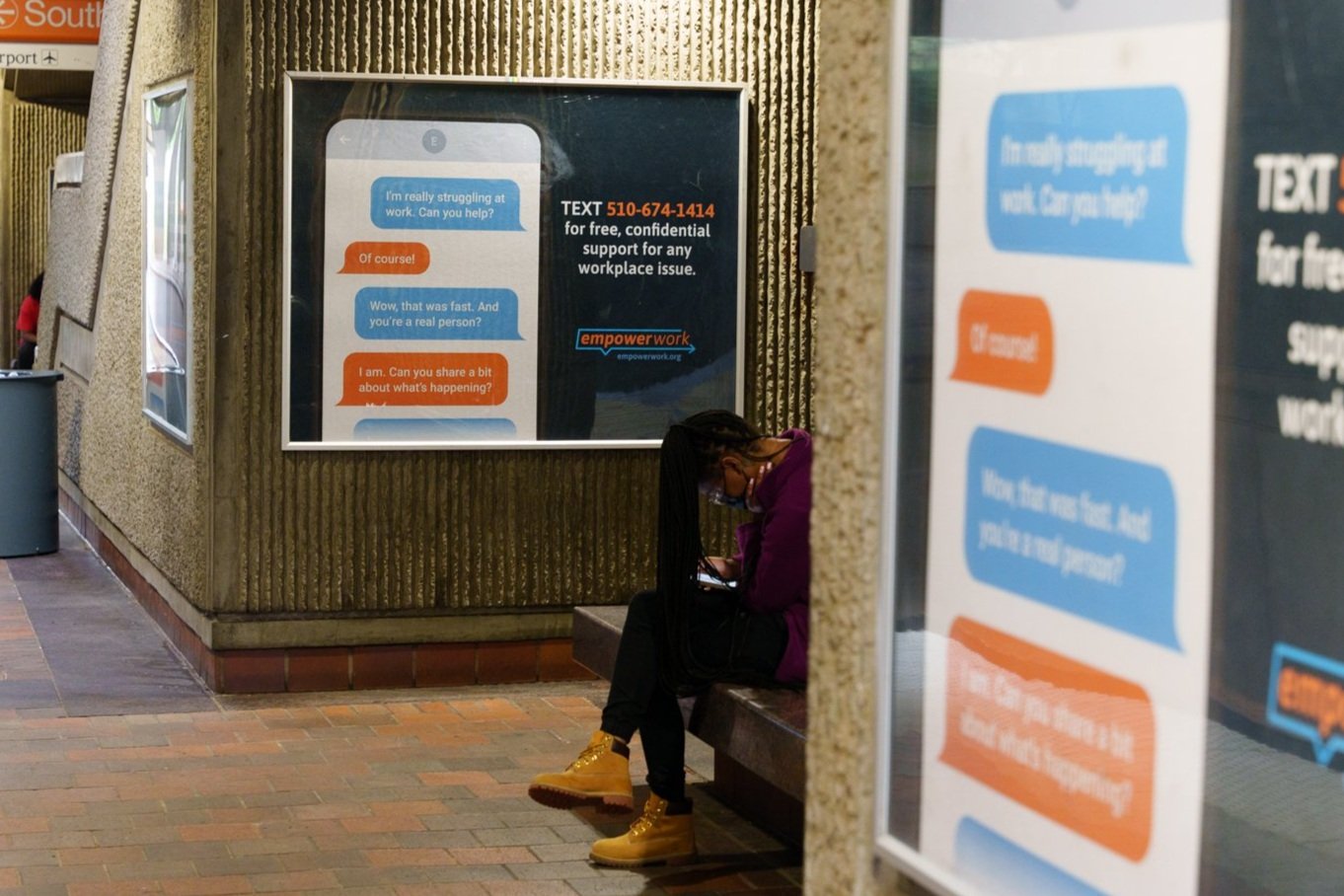What do I do if I feel physically unsafe at work?
Every year, approximately 125,000 workers in the United States are killed or disabled by hazardous work environments—almost 5,000 are from traumatic injuries and 120,000 are from occupational diseases.
In a perfect world, every workplace would be safe for workers’ physical wellbeing. Unfortunately, the world of work is far from perfect. Many workers face unsafe working conditions and environments.
Unsafe work environments can look different from workplace to workplace. It can take a toll on employees’ physical health. There are many different examples of hazardous conditions at work — sitting for hours on end with no breaks, dealing with heavy machinery, feeling afraid of other coworkers’ violent actions, driving safety, or kitchen health safety.
We see this regularly with workers who reach out to Empower Work. One Empower Work help seeker shared:
“I am being bullied at work and forced to do physical work which has injured me.”
Another Empower Work help seeker shared:
“I reported a few incidents to my higher ups now I'm being targeted...also being threatened violence at work…It's so bad and I already filed with the EEOC twice…First one was a manager bringing a gun.”
Another help seeker shared:
“I work as a delivery driver at night. My route is usually 400 miles in 8 hours. I let them know early this morning I wouldn't be getting any sleep… Now they want me to come in although I've been awake since 9:30…I am thinking of my safety and the safety of anyone else on the road. I drive a truck with a 26,000 pound rating. Plus it would affect my license if I was to fall asleep at the wheel and have a wreck.”
If you feel that your physical health is in danger at work, it’s important to know that you have rights and options.
Everyone deserves to feel safe at work.
Who is responsible for workplace safety?
In order to protect everyone at work, it’s important to know who’s in charge of keeping your workplace safe and workplace safety tips.
There are laws in place to prevent hazardous work environments such as the Occupational Safety and Health (OSH) Act administered by OSHA or the Equal Employment Opportunity Commission (EEOC). It’s employers’ responsibility to follow them. Yet, there are many workplaces where safety and health issues slip through the cracks and have serious consequences. For instance, workers at smaller companies don’t always have the same protections as workers in larger companies.
Have you seen something at work that seemed off, but you didn’t know who is responsible for keeping the workplace safe? Typically, a workplace’s human resources department is responsible for workplace health and safety. Many small companies don’t have HR specific roles. In that case, the workplace manager, supervisor, or business owner would be responsible.
If an employer or supervisor is not taking workplace safety seriously, you can take further action and report them.
Workplace safety tips
In order for everyone to feel safe at work and protect themselves as well as those around them, it’s helpful to know some work safety tips to prevent or disrupt an unsafe workplace environment.
Report unsafe conditions. If you feel safe to do so, report any hazardous working conditions the moment you notice something. Whether it’s a dangerous work zone or you’re working a schedule with long hours staring at a computer, there should always be preventative measures taken before things get out of hand. Notify your supervisor or HR representative right away. If you don’t feel safe to talk to HR or your manager, you may need to file a report to an external authority like OSHA. Remember to keep documentation of every unsafe work condition so you’re prepared with evidence when you file a report.
Take regular breaks. Overworking yourself can take a toll on your physical health. Whether it’s looking at a computer for too long, dealing with heavy machinery, or experiencing extreme fatigue from working long hours. Sometimes, stepping away and taking a breather is better for your health, rather than being pushed too far over the edge.
Know the safety procedures for your workplace. The federal Occupational Safety and Health Act (OSHA) requires all employers to follow specific guidelines in creating safe workplaces. It is your right to have safety procedures at your workplace and to know what those regulations are. If you see something wrong at work, it’s important to know these procedures and regulations in order to call them out and correct them.
Advocate for regular safety audits. Regular health and safety audits can reveal a lot about a workplace. Having these audits can also create a workplace culture that prioritizes the employees’ health. Even if you don’t notice anything wrong about your workplace, it’s still important to advocate for safety audits as a preventative measure and in order to maintain a healthy workplace environment.
While OSHA and other regulations support physical well-being, we know that the lack of physical safety can take a toll emotionally and psychologically. Many workplaces can feel unsafe in other ways—experiencing discrimination or harassment or being bullied by coworkers or employers can affect a person’s well-being. We’re here to support you and talk you through these really tough situations at work.
*Note: Empower Work provides non-legal support for workplace challenges. This information, while authoritative, is not legal advice or guaranteed for legality. Employment laws and regulations vary by state. We recommend consulting with state resources for specific interpretation and decisions. If you believe you were discriminated against in violation of the law, we recommend you seek legal advice.

